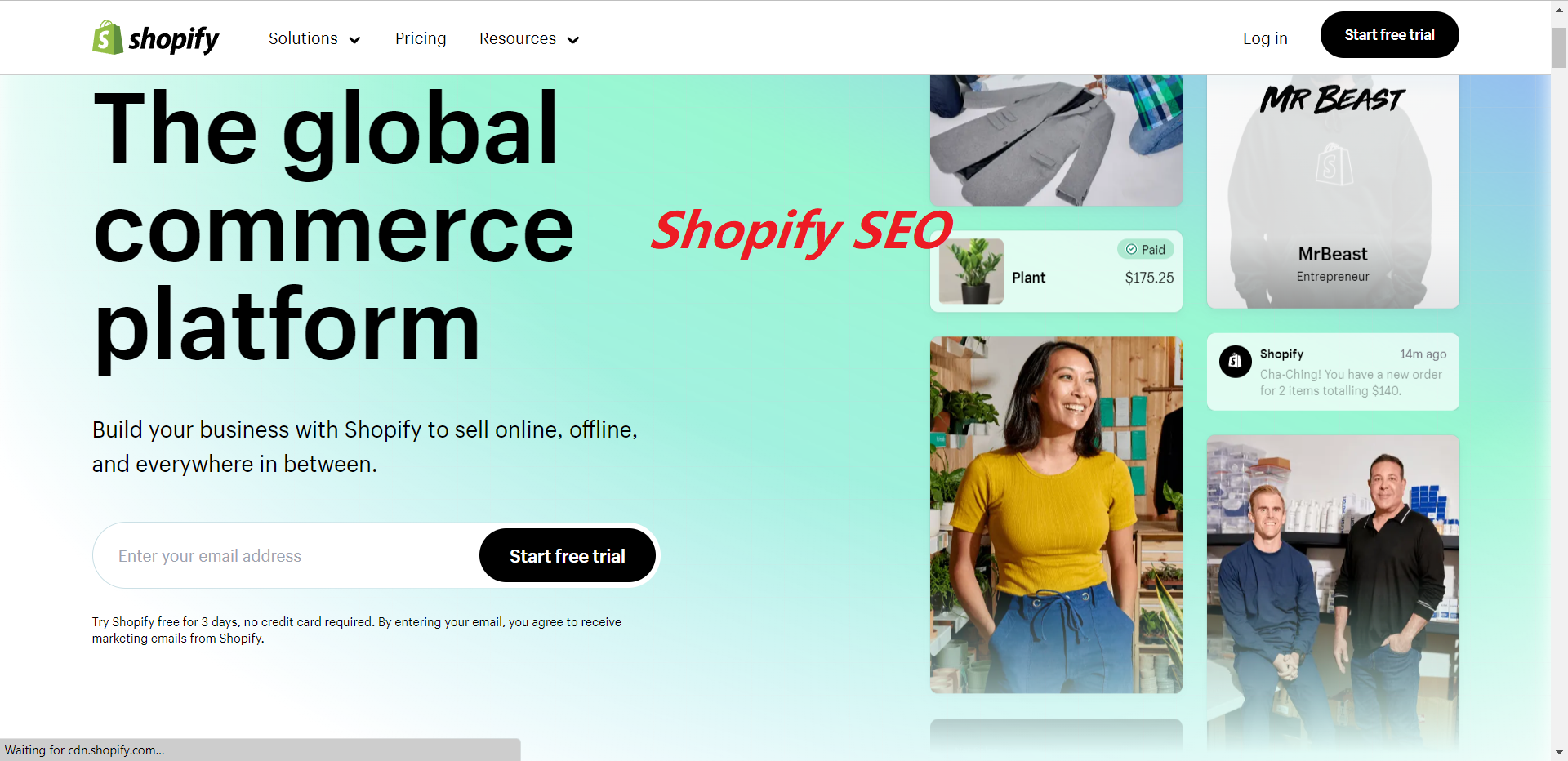5 Tips for Writing a Successful Shopify Blog
Understanding Your Audience
As a Shopify store owner, your blog is a powerful tool to attract potential customers and build relationships with existing ones. To create content that resonates with your audience, it's essential to understand who they are and what they need. Here are some tips for identifying and tailoring your content to your target audience.
Identify Your Target Audience
Before you start writing, take the time to determine the demographics of your audience. This includes their age range, gender, location, education level, income bracket, and any other relevant information. You can gather this data from customer surveys or by analyzing website analytics.
Once you have a clear picture of who your audience is, it's important to understand their interests and needs. What motivates them to shop at your store? What challenges do they face when making purchases online? By answering these questions, you can create content that addresses their pain points and provides solutions.
For example, if you sell eco-friendly products aimed at environmentally conscious millennials, you might write blog posts about sustainable living tips or the benefits of composting. By tailoring your content to their interests and values, you'll be more likely to engage them and keep them coming back for more.
Tailor Your Content to Your Audience
In addition to addressing their pain points and interests, it's important to use language and tone that resonates with your audience. Consider the tone of voice used by successful brands in your industry - are they casual and conversational or formal and authoritative? Use this as a benchmark for finding the right tone for your own brand.
Another way to tailor your content is by using examples or references that are relevant to your audience. If you're targeting parents with young children, for example, you might use anecdotes about family life or discuss parenting challenges that resonate with them.
Finally, make sure that the format of your content matches the preferences of your audience. Do they prefer short-form articles or long-form guides? Are they more likely to engage with video content or infographics? By understanding these preferences and tailoring your content accordingly, you'll be able to create a blog that truly resonates with your target audience.
In summary, understanding your audience is key when it comes to writing a successful Shopify blog. Take the time to identify their demographics and interests so that you can tailor your content accordingly. By doing so, you'll be able to engage readers on a deeper level and build lasting relationships with potential customers.
Creating Engaging Titles and Intros
As the saying goes, "you never get a second chance to make a first impression." The same is true for your Shopify blog titles and introductions. Your title and intro are the first things that readers see, so it's essential to make them engaging and attention-grabbing.
Craft Attention-Grabbing Titles
Your blog title should be clear, concise, and descriptive. It should give readers an idea of what they can expect to learn from your post. However, you also want to make sure that your title stands out from the crowd.
One effective strategy is to use numbers in your title. For example, "5 Tips for Writing a Successful Shopify Blog" is more eye-catching than "How to Write a Successful Shopify Blog." Another strategy is to use power words that evoke emotion or curiosity. Examples include "ultimate," "proven," or "surprising."
Write Compelling Introductions
Once you've crafted an attention-grabbing title, it's time to write an introduction that hooks the reader and entices them to keep reading. One effective way to do this is by starting with a story or anecdote related to your topic.
For example, if you're writing about how to increase sales on your Shopify store, you could start with a story about a struggling e-commerce entrepreneur who turned their business around using the tips you'll share in your post.
Another effective strategy is to preview the main points of your post in your introduction. This gives readers an idea of what they'll learn from your post and makes it easier for them to decide whether or not they want to keep reading.
Incorporating SEO Best Practices
When it comes to writing a successful Shopify blog, incorporating SEO best practices is essential. SEO, or search engine optimization, refers to the process of optimizing your website or content to rank higher in search engine results pages (SERPs). By implementing effective SEO strategies, you can attract more organic traffic to your blog and increase your visibility online.
One of the first steps in optimizing your Shopify blog for SEO is conducting keyword research. This involves identifying relevant keywords and phrases that your target audience is searching for. By including these keywords in your blog post, you can improve its relevance and increase its chances of ranking higher in SERPs.
When conducting keyword research, it's important to use tools like Google Keyword Planner or SEMrush to find long-tail keywords that are highly targeted and have low competition. Long-tail keywords are longer phrases that contain three or more words and are more specific than shorter keywords. Using long-tail keywords can help you reach a more targeted audience and increase the chances of conversion.
Once you've identified relevant keywords, it's time to optimize your content by including them in strategic places throughout your post. This includes incorporating them into your title, headings, subheadings, and body text. However, it's important not to overdo it with keyword stuffing as this can be seen as spammy by search engines.
In addition to incorporating keywords into your content, there are other on-page optimization techniques you can use to improve your Shopify blog's SEO. This includes using meta descriptions and alt tags for images. Meta descriptions provide a brief summary of what readers can expect from your post while alt tags describe the content of an image for visually impaired users and search engines.
By following these SEO best practices when writing a Shopify blog post, you can increase its visibility online and attract more organic traffic from search engines.
Enhancing Reader Experience with Visuals and Multimedia
In today's digital age, incorporating visuals and multimedia into your Shopify blog is essential to enhance the reader experience. The use of high-quality images can significantly improve the visual appeal of your blog post. When selecting images, it's crucial to choose those that are relevant to your content and visually appealing. For instance, if you're writing about a new product launch, include high-quality images of the product from various angles.
Moreover, optimizing images for web can improve page load times and prevent readers from leaving due to slow loading times. You can optimize your images by reducing their file size without compromising on quality. There are several tools available online that can help you compress your images without losing their quality.
In addition to using images, incorporating videos and infographics can also make your content more engaging. Videos are an effective way to complement your written content by providing additional information or demonstrating how something works. Infographics are a great way to present data and statistics in a visually appealing format that is easy for readers to understand.
When creating videos, ensure that they are relevant to your content and provide value to the reader. Use clear audio and high-quality visuals to keep the viewer engaged throughout the video. Similarly, when creating infographics, ensure that they are easy to read and understand by using simple language and clear visuals.
Promoting Your Blog
Promoting your Shopify blog is an essential step to increase visibility and attract traffic. There are various ways to promote your blog, but two of the most effective methods are social media marketing and email marketing.
Share Your Posts on Social Media
Social media platforms offer a great opportunity to connect with your audience and promote your content. However, it's important to choose the right social media platforms for your audience. For instance, if you're targeting young adults, Instagram or TikTok might be more suitable than LinkedIn or Facebook.
Once you've identified the right platforms, create eye-catching visuals that will grab readers' attention. Use high-quality images or videos that relate to your content and incorporate relevant hashtags. Hashtags make it easier for users to find your posts when they search for specific topics.
Another way to promote your Shopify blog on social media is by collaborating with influencers or other brands in your industry. Reach out to them and ask if they would be interested in sharing your content with their followers. This can help you reach a wider audience and gain more exposure.
Leverage Email Marketing
Email marketing is another powerful tool for promoting your Shopify blog. Building an email list of subscribers allows you to reach people who have already shown interest in your brand or products. You can send regular newsletters with links to your latest blog posts, as well as other updates about your business.
To build an email list, offer incentives such as exclusive discounts or free resources in exchange for subscribers' contact information. Make sure you comply with GDPR regulations and provide clear opt-in options for users.
When sending emails, personalize them by addressing subscribers by name and segmenting them based on their interests or behavior on your website. This can improve engagement rates and reduce unsubscribe rates.
In conclusion, promoting your Shopify blog through social media marketing and email marketing can significantly increase its visibility and attract organic traffic. By following these tips, you can effectively promote your content and expand the reach of your e-commerce store.
See Also
Maximizing B2B Blog Posts: 5 Tips for Success
Content Marketing and Copywriting: The Best AI Writing Tool
E-Commerce Made Easy: Shopify's Third Party Integrations


